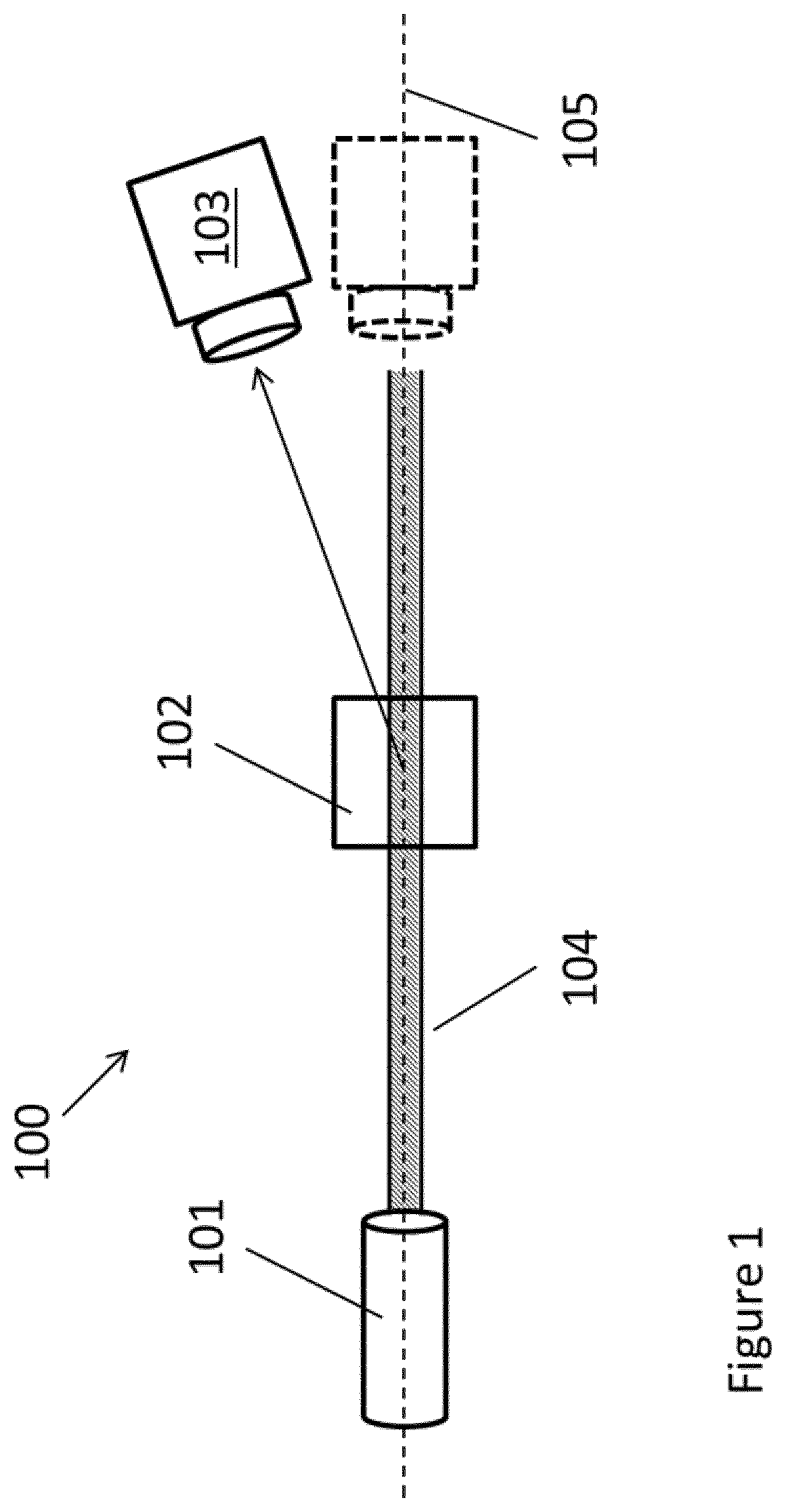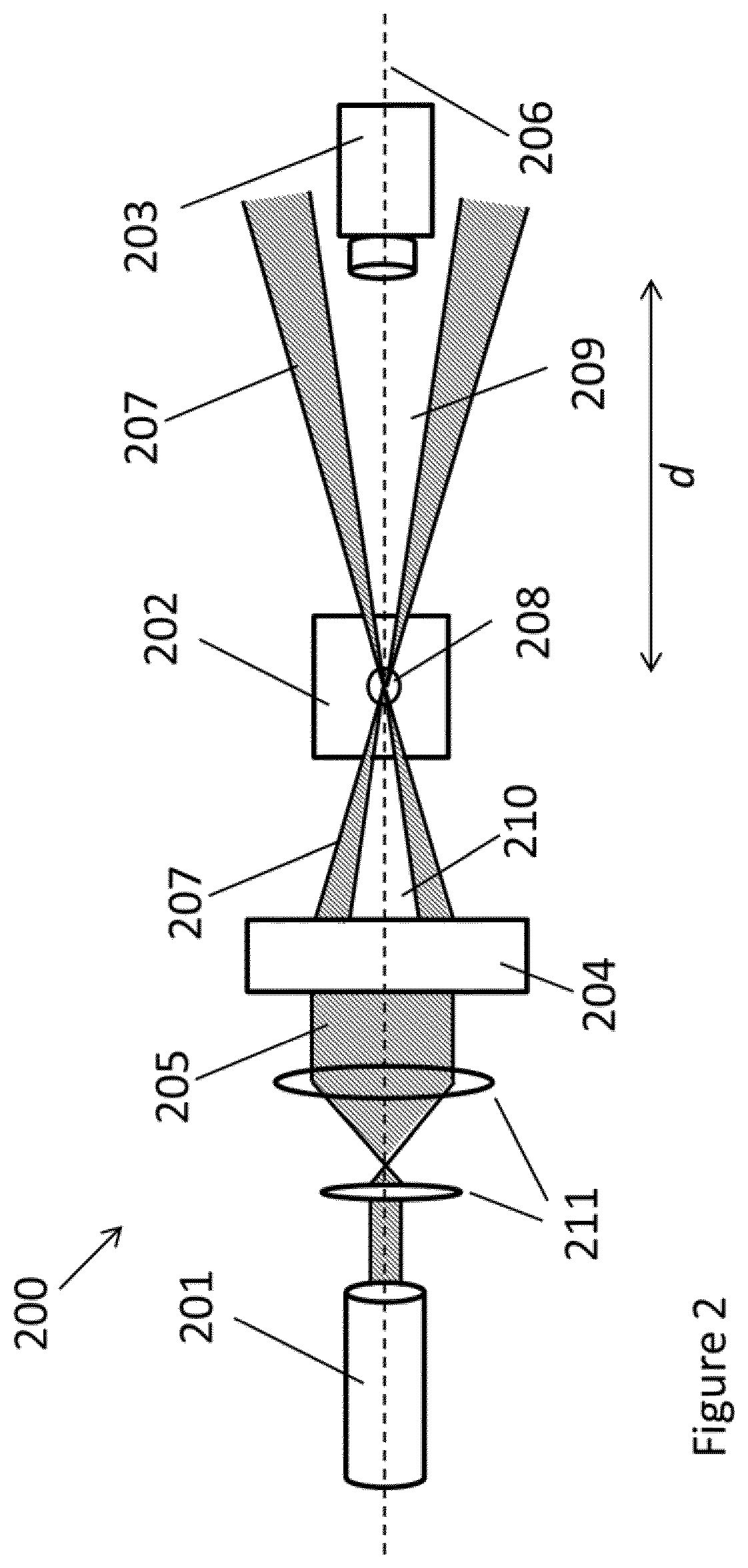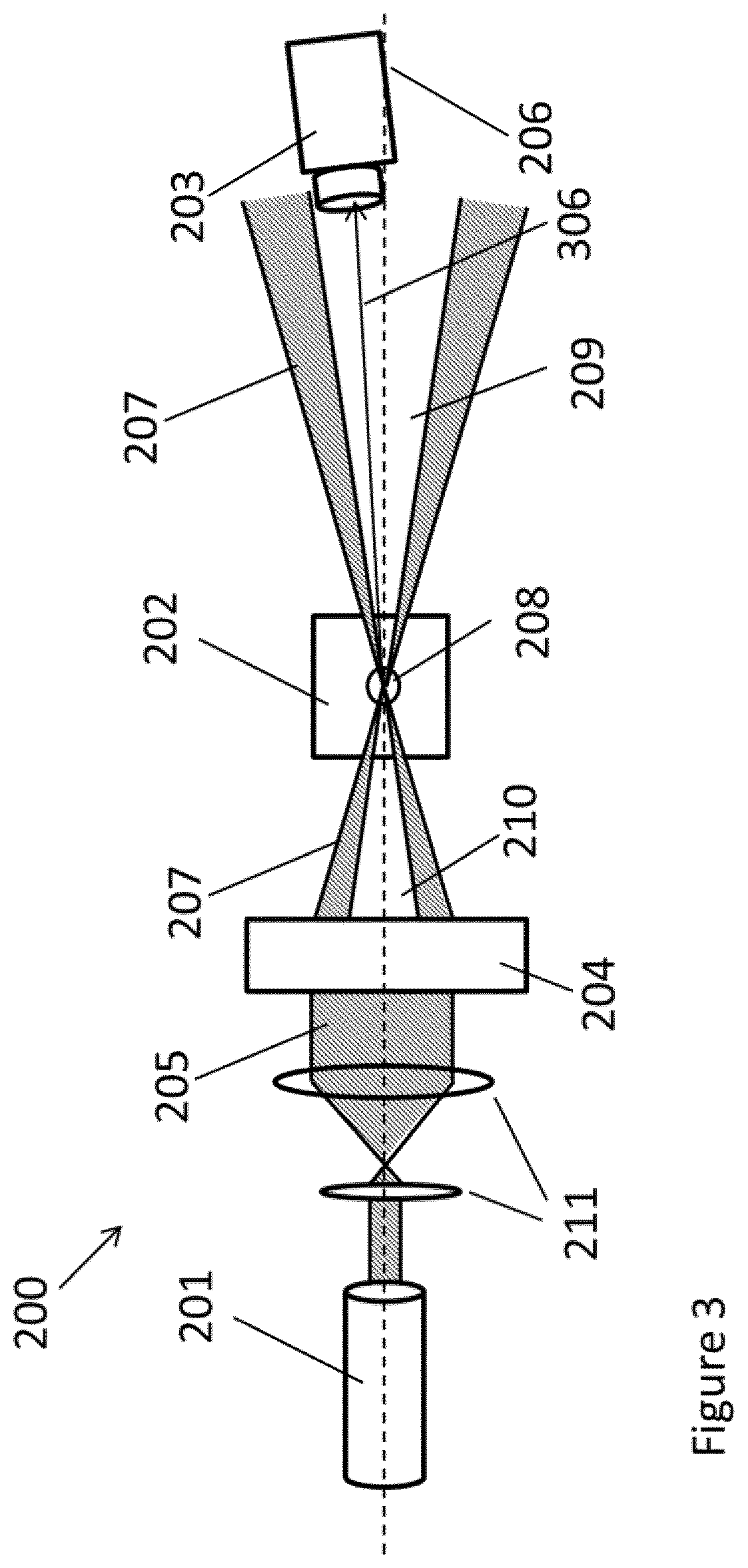Particle characterisation instrument
a particle and instrument technology, applied in the field of particle characterisation instruments, can solve the problems of limiting the accuracy of particle characteristics determined from these measurements, difficult to detect scattered light at low angles, and difficult to separate scattered light from incident light, etc., and achieve the effect of increasing capability or accuracy
- Summary
- Abstract
- Description
- Claims
- Application Information
AI Technical Summary
Benefits of technology
Problems solved by technology
Method used
Image
Examples
example experimental
[0179 results from an instrument using an early prototype obscured lens as the optical element are shown in FIGS. 11 and 12.
[0180]Light scattered from a dispersion of 60 nm latex at angles of 173° (backscatter—non-imaged detection), 17° (forward scatter, non-imaged detection) and nominally zero-angle (imaging optics) was detected. FIG. 11 shows the correlation coefficient for each of these detection angles (line 1201—173°; line 1202—17°; line 1203—zero-angle) as a function of delay time.
[0181]Further data for scattering of 60 nm latex is shown in FIG. 12. This figure shows the correlation function as a function of delay time for scattering angles of 12.8° (line 1301), 3.8° (line 1302), and zero-angle (line 1303).
[0182]In both FIG. 11 and FIG. 12, the prototype zero angle scattering detection has a longer correlation time than the conventional low angle detector approach (of 17° and 3.8° respectively). The exponential form of the correlogram for zero angle detection indicates a singl...
PUM
| Property | Measurement | Unit |
|---|---|---|
| angle | aaaaa | aaaaa |
| angle | aaaaa | aaaaa |
| angles | aaaaa | aaaaa |
Abstract
Description
Claims
Application Information
 Login to View More
Login to View More - R&D
- Intellectual Property
- Life Sciences
- Materials
- Tech Scout
- Unparalleled Data Quality
- Higher Quality Content
- 60% Fewer Hallucinations
Browse by: Latest US Patents, China's latest patents, Technical Efficacy Thesaurus, Application Domain, Technology Topic, Popular Technical Reports.
© 2025 PatSnap. All rights reserved.Legal|Privacy policy|Modern Slavery Act Transparency Statement|Sitemap|About US| Contact US: help@patsnap.com



